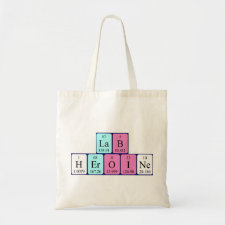
Authors: Hattori K, Doi T, Ogawa T, Ishihara N, Yoshimi Y, Sakai K
Article Title: Gate effect of glucose-imprinted dialysis membrane.
Publication date: 2007
Journal: Nephrology Dialysis Transplantation
Volume: 22
Issue: (Suppl. 6)
Page numbers: 121-122.
Alternative URL: http://ndt.oxfordjournals.org/cgi/reprint/22/suppl_6/vi120
Abstract: Introduction and Aims: Membranes capable of varying diffusive permeability according to molecular recognition are applicable to dialysis membrane, medical sensor, drug delivery system and the like. We have found the "gate effect" caused by rebinding target molecules in molecularly imprinted polymer (MIP) membranes. The objective of the present study is to prepare the polymer membrane imprinted with D-glucose (D-Glc) as the target molecule of diabetes by radical polymerization and to evaluate diffusive permeability and porosity of the MIP membrane.
Methods: D-Glc and 4-vinylphenylboronic acid as a functional monomer was esterified by dehydration condensation at 353 K for 4 h. The copolymer of ester and ethyleneglycol dimethacrylate as a crosslinking monomer was grafted on the cellulosic membrane by radical polymerization at 278 K for 24 h. The membrane was soaked in the mixture of 0.01 M hydrochloric acid and methanol (1:1 v/v) for 1 h. The D-Glc was then extracted from the graft copolymer by the hydrolysis of ester bonds. Residual cavities present in the copolymer after D-Glc extraction function as specific rebinding sites for D-Glc. This membrane is termed as to D-Glc-MIP membrane. We used overall mass transfer coefficient KL as diffusive permeability and water content H as porosity. In order to evaluate diffusive permeability and porosity of D-Glc-MIP membrane having the gate effect, KL and H were measured before and after D-Glc extraction, and also after D-Glc rebinding.
Results: KL andH of the D-Glc-MIP membrane after D-Glc extraction were higher than those before extraction and after rebinding. These results demonstrate that a decrease in diffusive permeability and porosity of the DGlc-MIP membrane is based on D-Glc rebinding. The hydrophobicity of the D-Glc-MIP membrane increases by rebinding template D-Glc, because the density of the hydrophilic boronic acid groups in the MIP layer is reduced. The MIP-grafted layer may then shrink by water withdrawal accompanying by hydrophobic interactions. We present the mechanism of the gate effect that the diffusive permeability decreases with a decrease in porosity based on the shrinkage of the MIP-grafted layer. On the other hand, the diffusive permeability of the D-Glc-MIP membrane was insensitive to the presence of the enantiomer L-Glc. These results indicate that the gate effect of the D-Glc-MIP membrane possesses high enantioselectivity. Conclusions: Enantioselective recognition of template molecule D-Glc changes the diffusive permeability of the D-Glc-MIP membrane because of a change in porosity by D-Glc rebinding.
Template and target information: D-glucose



Join the Society for Molecular Imprinting

New items RSS feed
Sign-up for e-mail updates:
Choose between receiving an occasional newsletter or more frequent e-mail alerts.
Click here to go to the sign-up page.
Is your name elemental or peptidic? Enter your name and find out by clicking either of the buttons below!
Other products you may like:
 MIPdatabase
MIPdatabase









